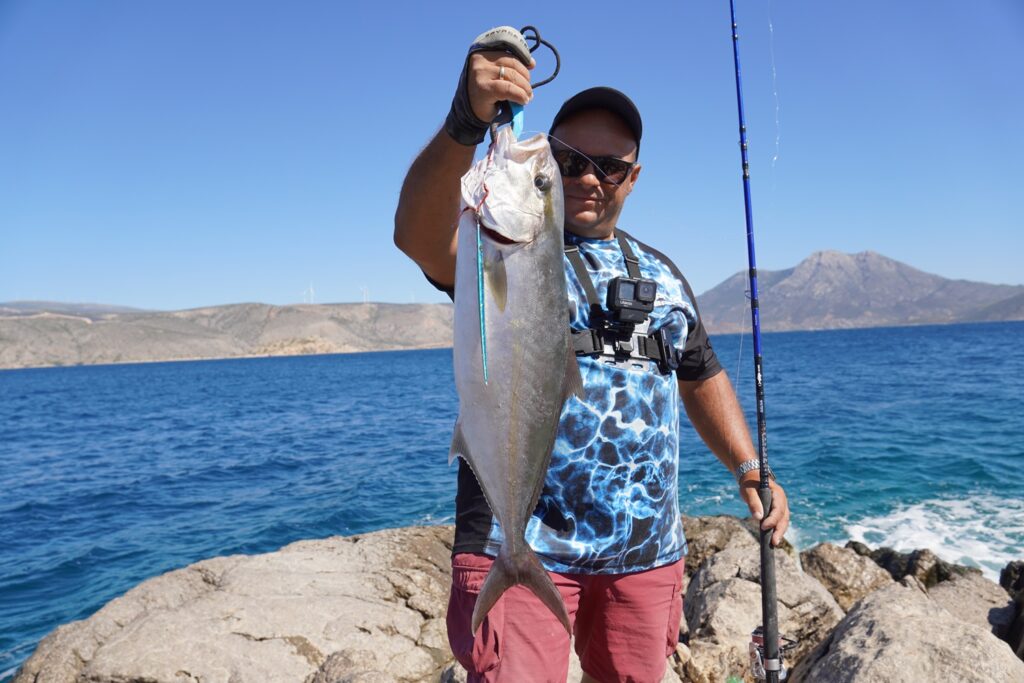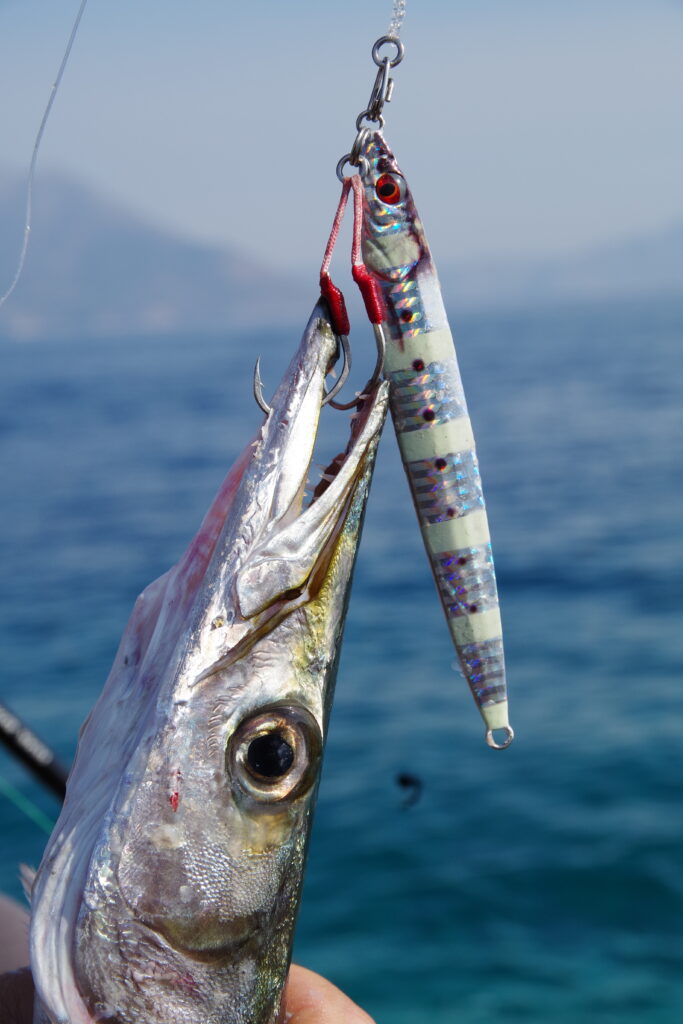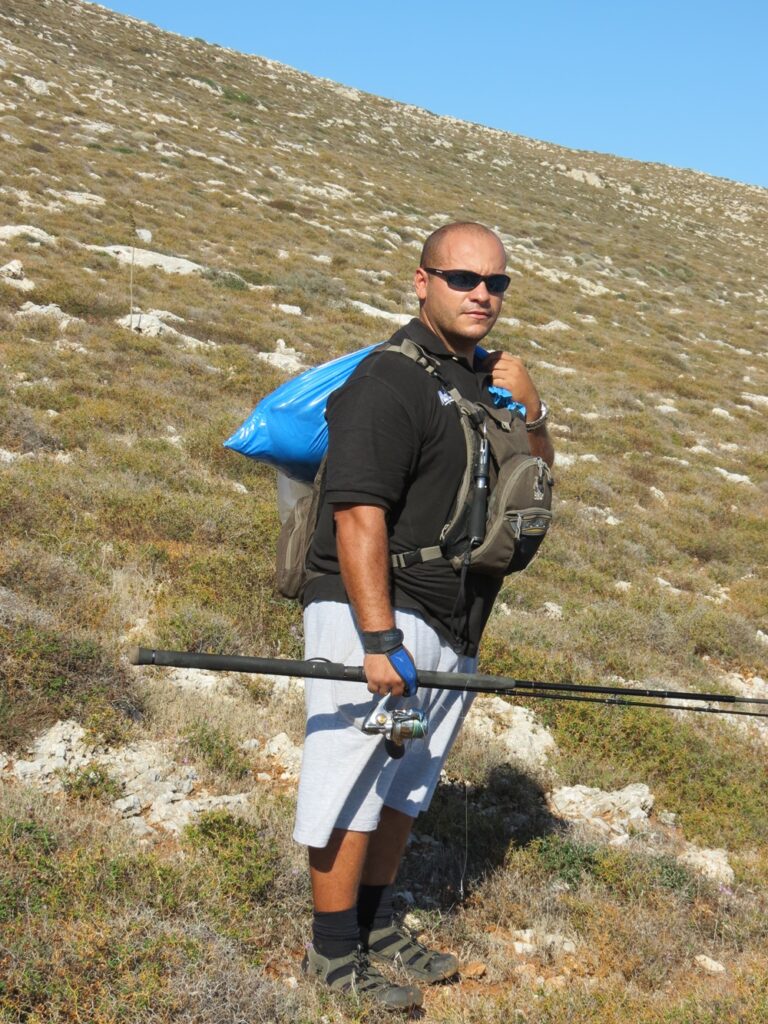“Shore Jigging for Beginners: A Comprehensive Guide to Exciting Coastal Angling”

Just Before the thunderstorm...
Shore jigging fishing is an exhilarating form of angling that allows beginners to explore coastal waters and experience the thrill of hooking into powerful and feisty fish species. Whether you’re a newbie to the world of fishing or have some experience but are new to shore jigging, this guide will help you get started and improve your chances of success. Shore jigging offers an opportunity to catch a variety of saltwater species, including snapper, tuna, grouper, barracuda, bonito, and more. Let’s dive into the basics of shore jigging fishing for beginners.

Understanding Shore Jigging
Shore jigging is a method of fishing where anglers cast and jig as they retrieve, artificial lures (jigs) to mimic prey and entice predatory fish. It is particularly popular in coastal areas where fish tend to gather near rocky outcrops, piers, or jetties. The technique involves targeting various depths and working the lure in a manner that imitates wounded or fleeing prey. The jigging action is highly irritating for predatory fish and there is the secret of success. Here are the essential steps for beginners:
- Selecting the Right Equipment:
- Rod: A medium to heavy Shore Jigging rod, between and 9.2 to 10 feet in length is ideal for shore jigging. Ideal rods for beginners should not be over 100gr. Ideally 30-100gr like the SGS2 Shore Jigging 10’ MH 30-100gr are excellent, effective and provide minimum fatigue to the new angler as he explores the rocky coastline. Look for a sensitive tip and a sturdy backbone to handle the fight when you hook a big fish.
- Reel: Choose a high-capacity spinning reel with a smooth drag system. A reel designed for saltwater fishing is preferable due to its durability. Ideally no bigger reels than 6000 size. But reels should be durable in order to withstand the “aggressive” nature of this fishing style. A good example of reel for beginners that can last long and doesn’t cost much is Penn Slammer IV 4500.
- Braid and leader
- You don’t need to use more than PE 2.5 braid at the beginning of your shore jigging career, especially if you choose the above rod and reel. Use a trustworthy 8 carrier braid for less noise during jigging. Fish can hear!
- A fluorocarbon leader is recommended to make your line less visible to fish. You need to use a hard type FC leader to be able to withstand some serious scratches on the rocks. Savage Gear Super Hard FC Leader is an excellent choice! Make sure you use at least 2.5 meter leader and no more than 0.55mm for the above gear.
- Choosing the Right Jigs:
- Jigs come in various shapes, sizes, and colors. The selection depends on the fish species you’re targeting and the water conditions. Jigs that are very “amateur user friendly” are: Sardine Slider, Needle Jig and Slim Jig Minnow.
- Natural colors are often effective for attracting fish in clear waters, while brightly colored jigs work well in murkier conditions.
3. Choosing the Right Assist Hooks:
You dont want to have your first strike and lose the fish, right? Make sure you are using appropriate assist hooks on your jigs! Your Assist hooks shoudl be very sharp, strong and saltwater resistant. Make sure that they do not “grab” and stick” on the jig during jigging. Bloody Assist Hooks are PERFECT for any jig!
4. Tying the Right Knots:
Use strong knots like the MV knot or PR knot to secure the jig to your line and the leader to your mainline.
- MV knot video here https://youtu.be/vra0VkiLYlk
- Improved Tony Pena knot video here https://youtu.be/-aeYD_Sca_w
5. Casting and Retrieving:
When casting, aim to land your jig close to the target area, a rocky fall, a structure, or a rip current.
After the cast, let your jig sink to the desired depth, and then begin the jigging retrieve.
Experiment with different jigging techniques like a fast, erratic retrieve or a slow, fluttering one to entice strikes. Usually fast jigging respond better to pelagic fishing like amberjacks, bonitos, tunas and albacores, while slower tempo is better for snappers, groupers and barracudas.
6. Reading the Water:
Pay attention to water conditions, tides, and currents. Fish often gather in areas where there is baitfish or where the current carries prey past them.
Observe the behavior of seabirds, as they can indicate the presence of feeding fish.
7. Patience and Persistence:
Shore jigging can require patience, and it may take time to locate active fish. Don’t get discouraged if you don’t catch fish on every outing.
8. Safety Considerations:
Be cautious when fishing from rocky shorelines or piers. Wear appropriate footwear with good traction to avoid slips and falls. When it comes to Rocky Shores, always let someone know where you are, or even better, never go alone. Having company when a beginner, can only make your fishing better, less tiring, and easier. If your company is an experienced angler, even better!
Conclusion
Shore jigging fishing is an exciting and rewarding way to explore coastal waters while targeting a variety of saltwater species. As a beginner, it’s essential to start with the right equipment, practice your casting and retrieval techniques, and pay attention to the water conditions. Remember, fishing is not just about the catch but also about enjoying the outdoors and the thrill of the chase. With some dedication, patience, and a bit of trial and error, you can become a successful shore jigging angler and experience the joys of coastal fishing. So, grab your gear, head to the shoreline, and start your shore jigging adventure today!











